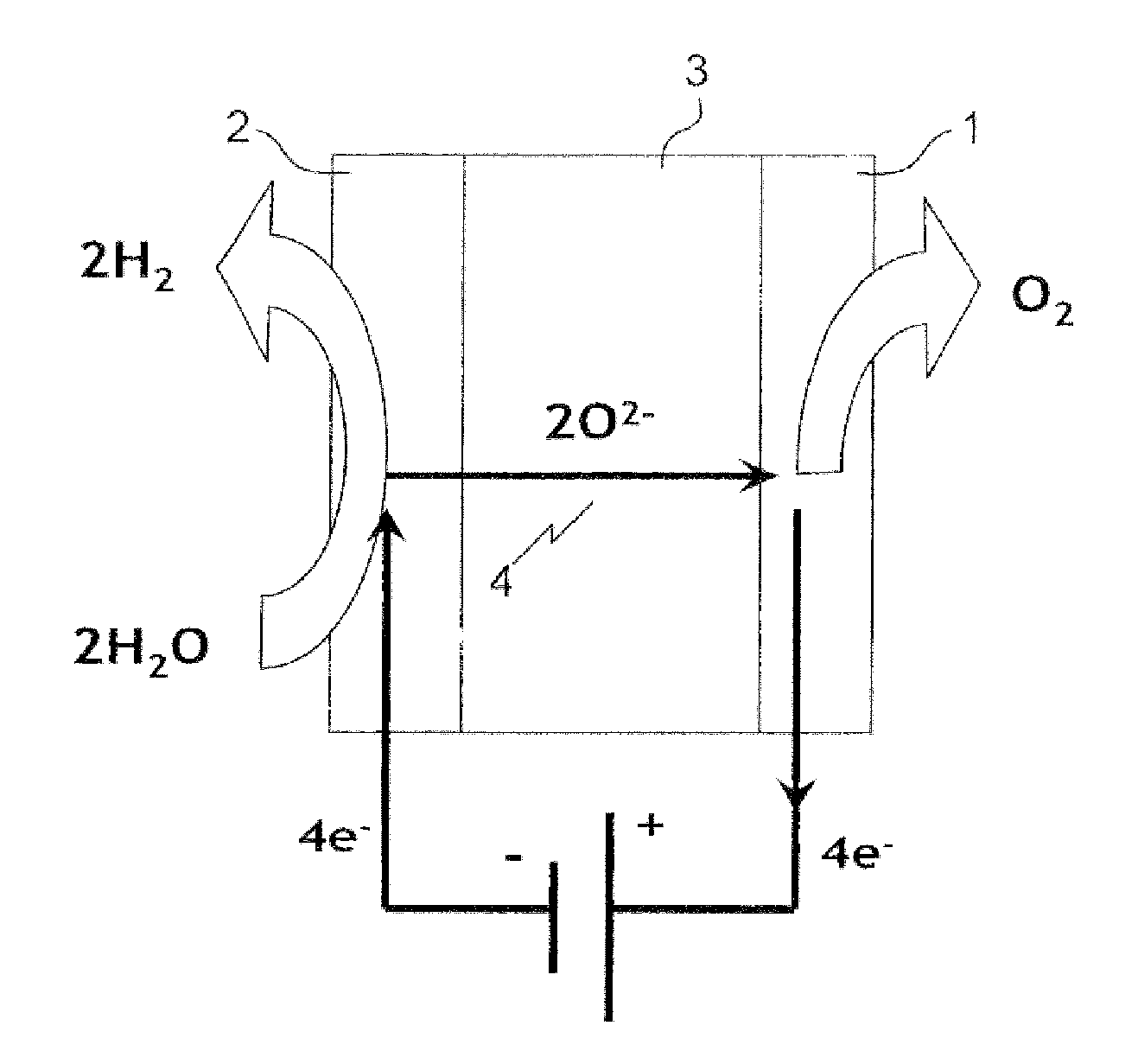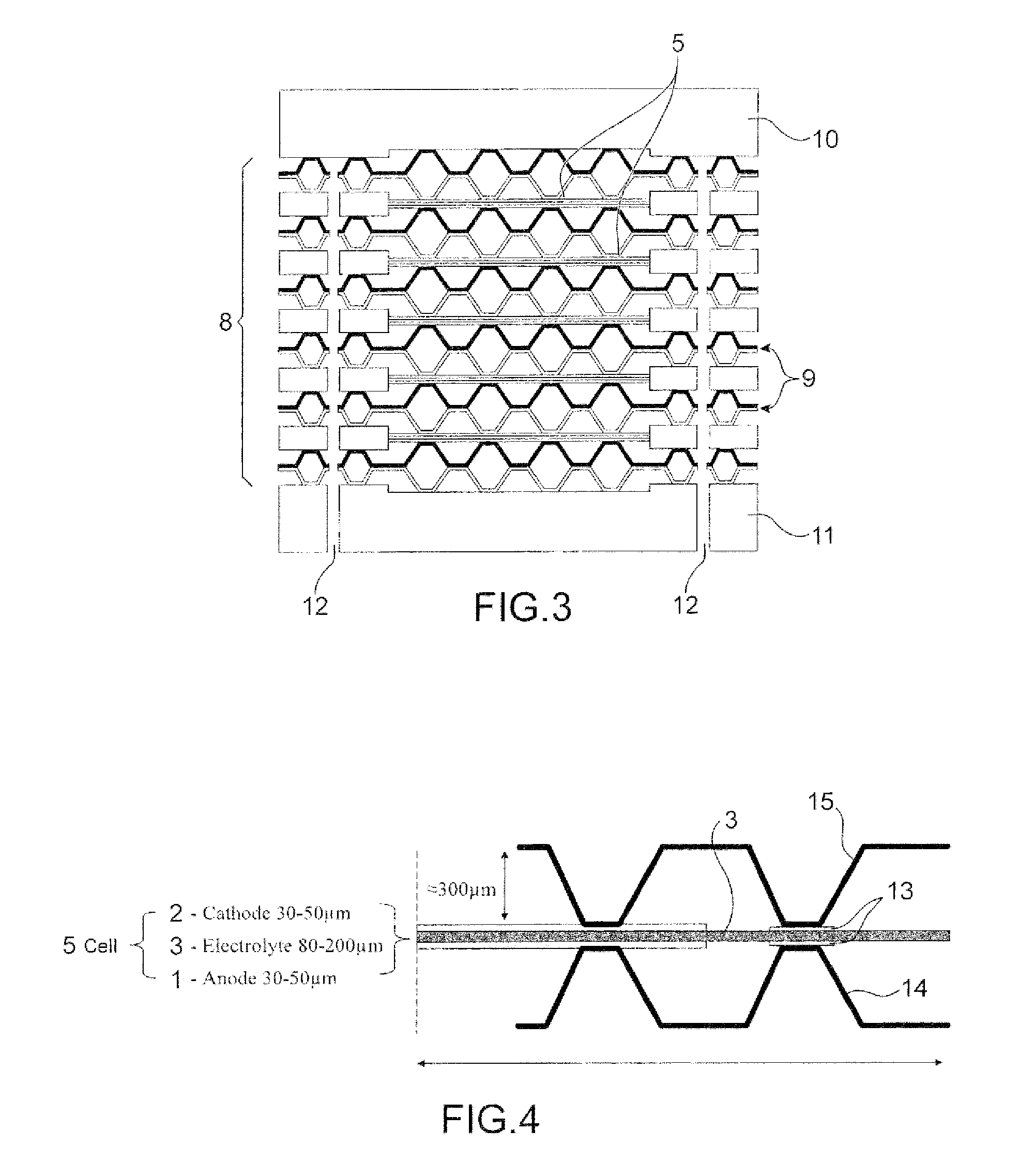Vitroceramic glass compositions for gaskets of apparatuses operating at high temperatures and assembling method using said compositions
a technology of vitroceramic glass and compositions, which is applied in the field of vitroceramic glass compositions, can solve the problems of degradation, complex industrial development of this type of vitroceramic glasses, and reducing the performance of systems such as fuel cells and high-temperature electrolyzers, so as to reduce corrosion and excessive crystallization reactions
- Summary
- Abstract
- Description
- Claims
- Application Information
AI Technical Summary
Benefits of technology
Problems solved by technology
Method used
Image
Examples
example 1
[0275]In this example, glasses according to the invention are prepared by the elaboration method described above and the main physical properties of these glasses are determined.
[0276]These properties are:[0277]the amorphous or crystalline nature of the glass as determined by X-ray diffraction (XRD);[0278]the density MV (in g / cm3) determined by a hydrostatic buoyancy method;[0279]the glass transition temperature Tg (° C.) determined by differential thermal analysis (DTA) and by dilatometry;[0280]the crystallization temperature Tx (° C.) determined by differential thermal analysis (DTA);[0281]the softening temperature Td (° C.) and the thermal expansion coefficient (TEC) determined by dilatometry.
Glasses Compositions (A), CAS Glasses
[0282]The main properties of these glasses are gathered in Table 9 below.
[0283]All these glasses may be elaborated at a temperature of less than 1,550° C. and are of a perfectly amorphous nature.
[0284]
TABLE 9Main properties of CAS glassesDTADilatometryEla...
example 2
[0291]In this example, the characteristics of the gaskets formed with the glass compositions according to the invention are studied.
[0292]This study consists of determining the quality of the interfaces and the nature of the formed crystalline phases.
Quality of the Interfaces
[0293]The interactions of glass compositions according to the invention with various materials making up an electrolyzer are studied at various operating temperatures, i.e. 800 to 900° C., and for various durations, i.e. 50 to 720 hours, under an oxidizing atmosphere (air).
[0294]These tests are conducted in the laboratory with samples of materials representative of the electrolyzer, on which is placed a small amount of glass paste applied in the same way as for the tests on electrolyzer prototypes. The glass / metal and glass / ceramic samples are treated in air in a muffle oven according to the heat treatment procedure of FIG. 6.
[0295]The interface is then observed with a scanning electron microscope (SEM).
[0296]Gl...
example 3
[0326]In this example, sealing, tightness tests are carried out by measuring the pressure drop on vitroceramic gaskets prepared with the glass composition > according to the invention.
[0327]Preparation of the Gasket.
[0328]A conventional shaping method is used for the glass gasket which consists of preparing a glass paste or slurry consisting of a mixture of the glass milled to a grain size from 0 to 20 μm, of terpineol, polyvinyl butyral and ethanol.
[0329]The mass proportions used for making this mixture are 12% of terpineol which plays the role of a dispersant, 6% of polyvinyl butyral which plays the role of a binder, 12% of ethanol which plays the role of a solvent and 70% of glass powder. The obtained mixture has the consistency of a maleable paste, easy to spread out.
[0330]Sealing and Pressurization Assembly
[0331]The test assembly used for the sealing, tightness, and pressurization tests is schematized in FIGS. 17 and 18.
[0332]FIG. 17 illustrates the assembly before loading and ...
PUM
| Property | Measurement | Unit |
|---|---|---|
| temperature | aaaaa | aaaaa |
| temperature T2 | aaaaa | aaaaa |
| temperature T2 | aaaaa | aaaaa |
Abstract
Description
Claims
Application Information
 Login to View More
Login to View More - R&D
- Intellectual Property
- Life Sciences
- Materials
- Tech Scout
- Unparalleled Data Quality
- Higher Quality Content
- 60% Fewer Hallucinations
Browse by: Latest US Patents, China's latest patents, Technical Efficacy Thesaurus, Application Domain, Technology Topic, Popular Technical Reports.
© 2025 PatSnap. All rights reserved.Legal|Privacy policy|Modern Slavery Act Transparency Statement|Sitemap|About US| Contact US: help@patsnap.com



